1. Introduction
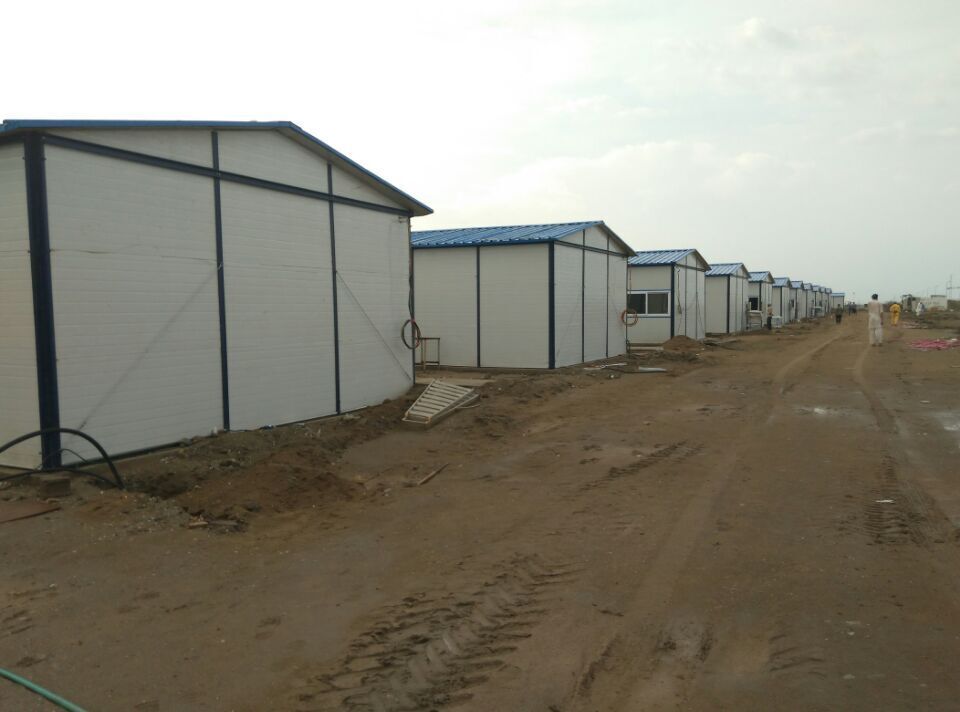
2. The Growing Demand for Amenity-Rich Prefab Mobile Houses
2.1 Shifting User Expectations
2.2 The Limitations of Traditional Prefab Mobile Houses
2.3 Lida Group’s Response to Market Needs
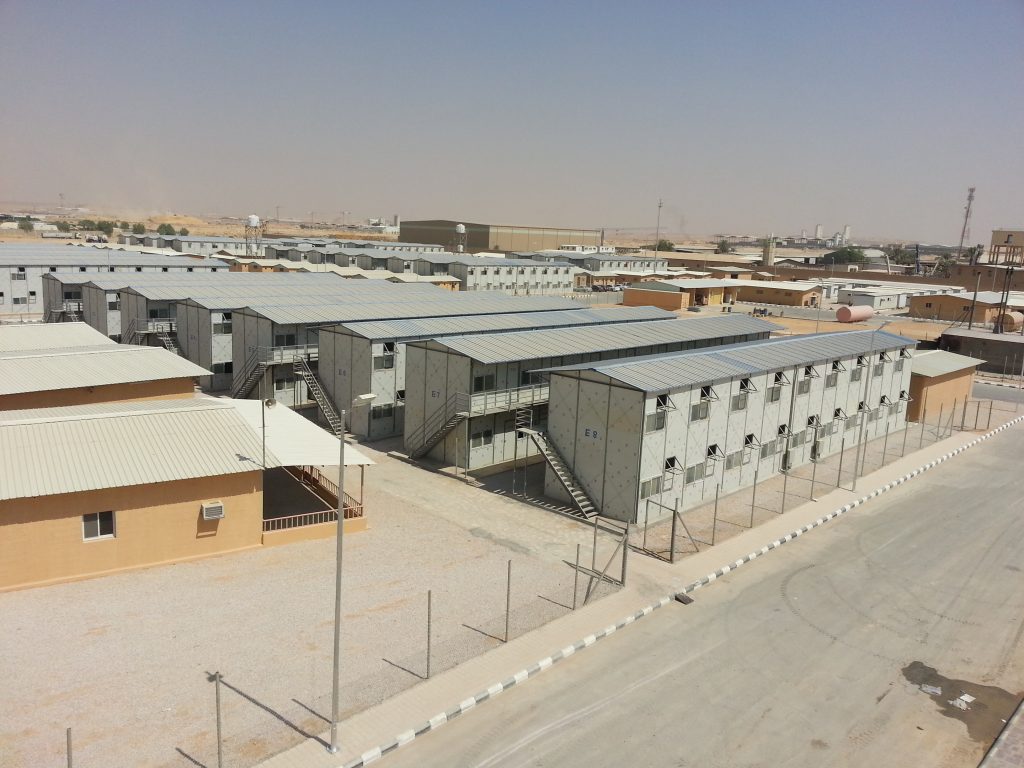
3. An Overview of Lida Group’s Prefab Mobile House Portfolio
3.1 Worker Accommodation Series
3.2 Emergency Shelter Series
3.3 Remote Living Series
3.4 Event & Pop-Up Series
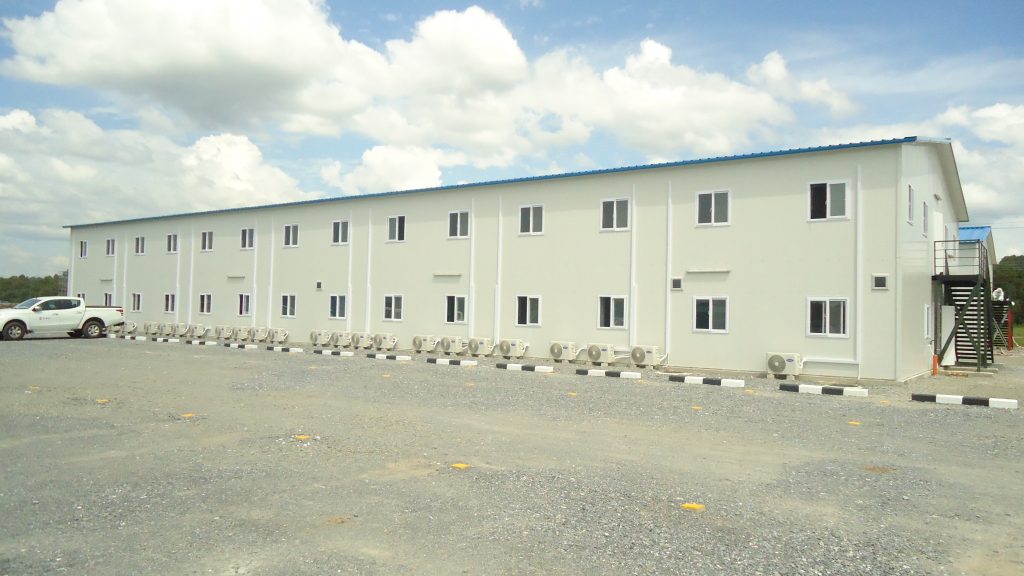
4. Key Modern Amenities Integrated into Lida Group’s Designs
4.1 Climate Control Systems
- Heating: For cold climates, units include electric or propane heaters with thermostats, designed to maintain a comfortable temperature (18–22°C) even in temperatures as low as -20°C. The heaters are paired with the company’s proprietary insulation (made from recycled rock wool) to minimize heat loss, reducing energy consumption by 35% compared to traditional mobile house heaters.
- Cooling: In hot climates, units feature compact air conditioning units or evaporative coolers (for dry regions) that cool spaces to 24–26°C. The AC units use inverter technology, which adjusts power usage based on cooling needs—cutting energy costs by up to 40% compared to standard AC systems.
- Ventilation: All units include ceiling fans and operable windows with insect screens, ensuring adequate airflow even when HVAC systems are not in use. This reduces reliance on electricity and improves indoor air quality.
4.2 Sanitary & Bathroom Facilities
- Private Bathrooms: Most units (except for small event models) include private or shared bathrooms with toilets, sinks, and showers. The toilets use low-flow technology (4.8 liters per flush), reducing water consumption by 50% compared to standard toilets. Showers are equipped with water-saving heads and instant hot water heaters, ensuring a steady supply of hot water without the need for large storage tanks.
- Waste Management: For remote or disaster zones without access to sewage systems, units use composting toilets or portable waste tanks that can be emptied periodically. These systems are odor-free and meet international sanitation standards, making them safe for long-term use.
- Hygiene Features: Bathrooms also include mirrors with LED lighting, towel racks, and storage cabinets for toiletries—small touches that enhance comfort and organization.
4.3 Functional Kitchens
- Basic Kitchens (Worker & Emergency Series): These include mini-fridges (50–80 liters), two-burner stovetops (electric or propane), and small sinks with running water. Storage cabinets and counter space are optimized for small kitchens, ensuring users can prepare simple meals without clutter.
- Upgraded Kitchens (Remote Living Series): These feature full-size fridges (150–200 liters), four-burner stovetops, microwave ovens, and compact dishwashers. Countertops are made from durable, easy-to-clean materials (such as stainless steel or composite stone), and cabinets include soft-close hinges for longevity.
- Water & Energy Efficiency: All kitchens use low-flow faucets to reduce water waste, and appliances are energy-star certified to minimize electricity use. For off-grid locations, kitchens can be equipped with propane-powered appliances or solar panels to power fridges and stovetops.
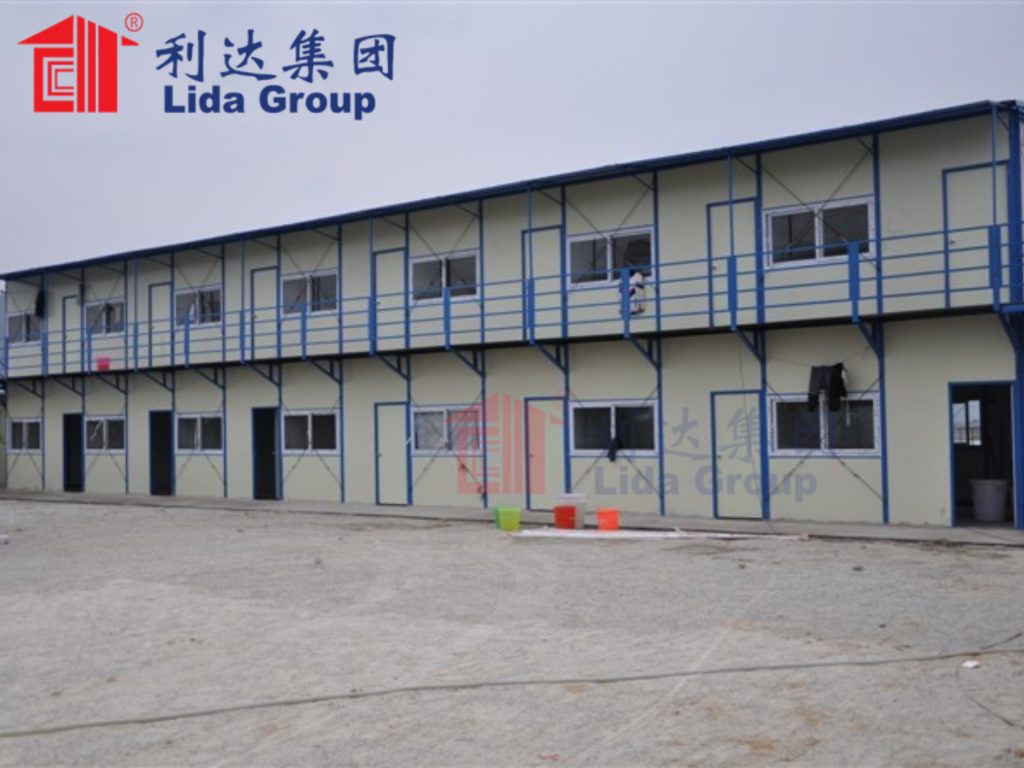
4.4 Energy-Efficient Lighting & Electrical Systems
- LED Lighting: All units are equipped with LED lights in every room, including overhead lights, task lighting (under kitchen cabinets, reading lamps), and exterior lights for safety. LED lights use 75% less energy than incandescent bulbs and have a lifespan of 50,000 hours—reducing the need for replacements and maintenance costs.
- Electrical Outlets: Units include multiple electrical outlets (2–4 per room) with USB ports for charging devices. Outlets are installed at waist height (for easy access) and include childproof covers in family-friendly models.
- Solar Integration: For off-grid applications (such as disaster zones or remote work sites), units can be fitted with solar panels (100–300 watts) and battery storage systems (50–100 Ah). These systems power lighting, small appliances, and even HVAC systems (for short periods), eliminating reliance on grid electricity.
4.5 Connectivity & Entertainment Features
- Internet Connectivity: Remote Living and Event Series units include built-in satellite or 4G/5G modules that provide high-speed internet access. The modules are compatible with local service providers, ensuring reliable connectivity even in remote areas. For example, a research team in the Amazon rainforest used Lida Group’s Remote Living units to stay connected with their headquarters via satellite internet—enabling real-time data sharing and video conferences.
- Entertainment: Remote Living units include flat-screen TVs (32–43 inches) with streaming capabilities (via internet) and USB ports for playing movies or music. Worker Accommodation units often include small speakers and Bluetooth connectivity, allowing users to listen to music or podcasts.
- Workspaces: Many units include dedicated workspaces with desks and ergonomic chairs—critical for remote workers or construction managers who need to complete paperwork or attend virtual meetings. The workspaces are equipped with task lighting and extra electrical outlets for laptops and printers.
4.6 Storage & Organization Solutions
- Built-In Storage: Units include wardrobes, shelves, and cabinets in bedrooms, kitchens, and living areas. For example, Worker Accommodation units have under-bed storage drawers and hanging wardrobes for clothing, while Remote Living units include pantry cabinets for food storage and bookshelves for personal items.
- Modular Storage: Some models feature modular storage systems that can be reconfigured based on user needs. For instance, Event Series units can have removable shelves that convert a ticket booth into a storage closet when not in use.
- Exterior Storage: Larger units (Remote Living Series) include lockable exterior storage boxes for tools, equipment, or outdoor gear—keeping these items secure and out of the way.
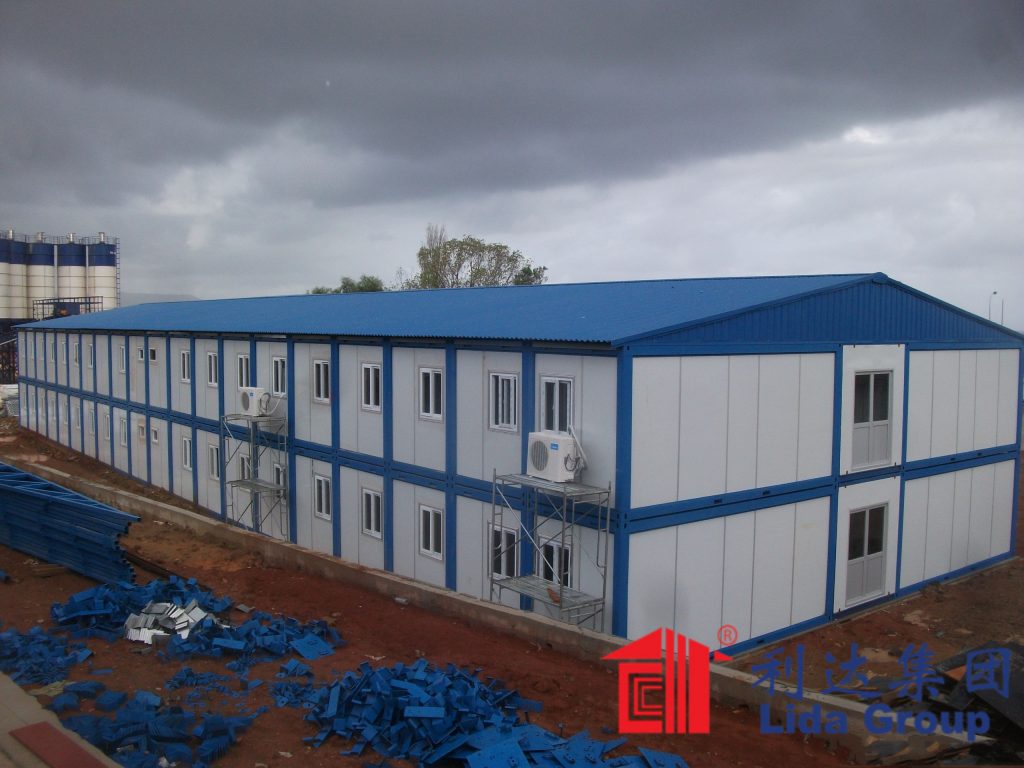
5. How Lida Group Maintains Low Costs Without Sacrificing Amenities
5.1 Modular Design & Standardization
Standardized Components: Key components (such as wall panels, bathroom modules, and kitchen units) are produced in large quantities using the same molds and processes. For example, the company’s bathroom modules are identical across all Worker Accommodation models, allowing for bulk production and lower per-unit costs.
Modular Assembly: Units are assembled from prefabricated modules that can be easily connected on-site. This reduces on-site labor time by 60% compared to traditional construction, as fewer workers are needed to assemble the house. For instance, a 40-square-meter Remote Living unit can be assembled by 2 workers in just 36 hours—cutting labor costs by $1,200 per unit.
Flexible Customization: Despite standardization, Lida Group offers limited customization (such as exterior colors or additional storage) without increasing costs. This is achieved by designing modules that can be modified quickly (e.g., swapping a standard wall panel for a panel with extra windows) without disrupting the production line.
5.2 Strategic Material Sourcing
Recycled & Sustainable Materials: The company uses recycled materials wherever possible—such as recycled
- Bulk Purchasing: By ordering materials in large quantities (e.g., 10,000+ wall panels per month), Lida Group negotiates bulk discounts with suppliers. This reduces the per-unit cost of materials by up to 25%. For instance, the company’s annual order of LED lights (50,000+ units) allows it to secure a 22% discount from its supplier, passing these savings on to customers.
- Local Sourcing: To reduce transportation costs and lead times, Lida Group sources materials from local or regional suppliers whenever possible. For example, in Africa, the company works with local steel manufacturers and insulation producers, cutting transportation costs by 30% compared to importing materials from Europe or Asia. This not only lowers costs but also supports local economies—a win-win for the company and its global customers.
5.3 Streamlined Manufacturing Processes
- Automation: The company uses automated machinery for key production steps, such as cutting steel panels, assembling bathroom modules, and installing insulation. For example, an automated steel cutting machine can produce 500 wall panels per day—3 times faster than manual cutting—with 99% accuracy, reducing material waste from 8% to 2%. Automated assembly lines for kitchen modules cut labor time by 40%, as robots handle repetitive tasks like attaching cabinet doors and installing sinks.
- Lean Production: Lida Group adopts lean manufacturing principles, such as just-in-time (JIT) inventory management and continuous improvement, to eliminate inefficiencies. JIT inventory ensures that materials arrive at the factory exactly when needed, reducing storage costs and the risk of material waste from obsolescence. Continuous improvement teams (composed of engineers and factory workers) regularly identify and fix bottlenecks in the production process—for example, redesigning a mold to reduce the time needed to produce bathroom sinks by 15%.
- Energy Efficiency in Factories: The company’s factories are equipped with energy-efficient lighting, solar panels, and waste heat recovery systems, reducing energy costs by 28%. For instance, the factory in Vietnam generates 30% of its electricity from rooftop solar panels, cutting reliance on grid power and lowering production costs.
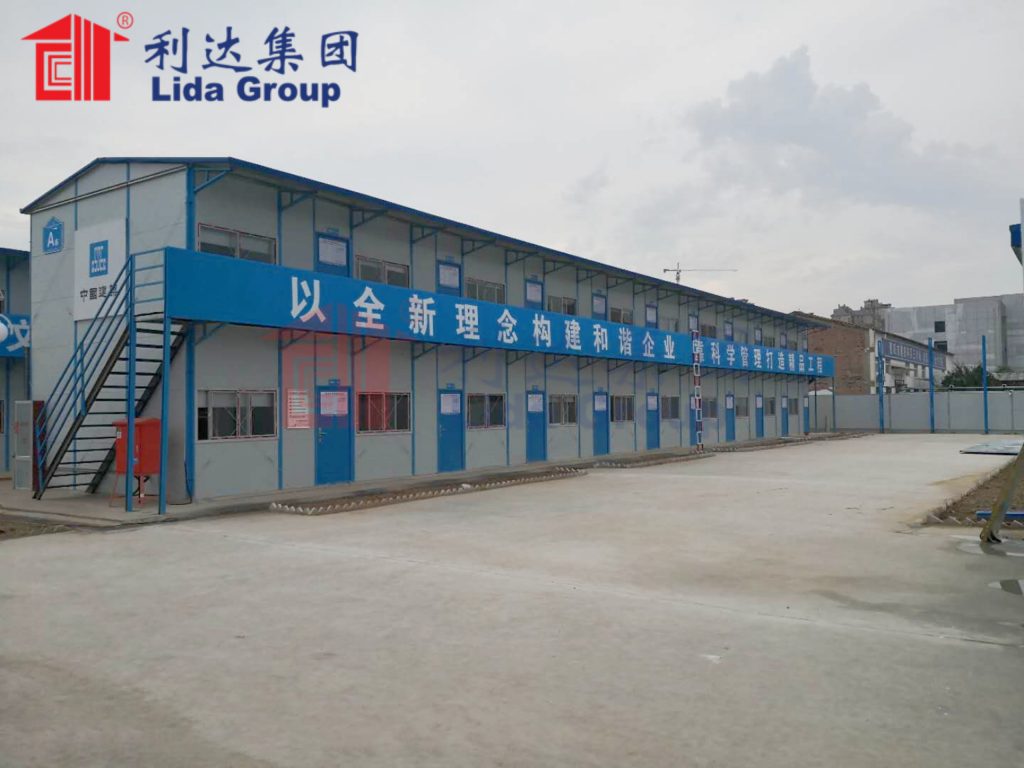
5.4 Economies of Scale
- Fixed Cost Spread: Fixed costs (such as factory rent, machinery maintenance, and administrative salaries) are spread across a large number of units. For example, a factory with \(500,000 in annual fixed costs will have a fixed cost per unit of \)50 if it produces 10,000 units—compared to $500 per unit if it produces only 1,000 units. This dramatic reduction in fixed cost per unit is a major driver of Lida Group’s low prices.
- Supplier Negotiation Power: High production volumes give Lida Group significant leverage when negotiating with suppliers. The company can demand lower prices, longer payment terms, and better quality guarantees—benefits that smaller manufacturers cannot access. For example, the company’s annual order of 20,000 HVAC systems allows it to negotiate a 25% price reduction and a 60-day payment term, improving cash flow and reducing upfront costs.
- R&D Efficiency: With a large customer base, Lida Group can invest in research and development (R&D) for new amenities or cost-saving technologies and spread the R&D costs across thousands of units. For example, the company spent \(200,000 on developing a more efficient solar integration system—an investment that was recouped after selling just 400 units, as the system reduced production costs by \)500 per unit.
5.5 Minimal On-Site Labor Requirements
- Pre-Assembled Modules: Most components of Lida Group’s mobile houses are pre-assembled in factories, where labor is more efficient and less expensive. For example, bathroom modules are fully assembled (including toilets, showers, and sinks) in the factory, so on-site workers only need to connect them to water and electrical lines—a task that takes 2 hours instead of the 8 hours required to build a bathroom from scratch on-site.
- Simplified Assembly: The company’s designs use simple connection systems (such as bolt-on panels and plug-and-play electrical wiring) that require minimal skill to install. This means that customers do not need to hire expensive specialized workers (such as electricians or plumbers) for assembly—ordinary construction workers can complete the job. For instance, a 20-square-meter Worker Accommodation unit can be assembled by 2 general laborers in 24 hours, compared to 4 specialized workers taking 3 days for a traditional temporary structure.
- Reduced Site Preparation: Lida Group’s mobile houses require minimal site preparation—no concrete foundation is needed, as units can be placed on gravel, steel frames, or even level ground. This eliminates the cost of excavation, concrete pouring, and foundation construction—saving customers an average of $3,000 per unit.
5.6 Avoidance of “Amenity Bloat”
- User-Centric Feature Selection: Before adding an amenity to a model, Lida Group conducts extensive customer research to ensure it is in high demand. For example, the company added USB ports to electrical outlets after a survey found that 92% of users needed to charge smartphones and tablets. In contrast, the company rejected a proposal to add built-in coffee makers to Worker Accommodation units, as only 15% of users expressed interest—avoiding a $50 per unit cost that would not deliver value.
- Multi-Functional Design: Many amenities are designed to serve multiple purposes, reducing the need for separate features. For example, the LED lights in bathrooms include built-in mirrors, eliminating the cost of separate mirrors. The workspaces in Remote Living units double as dining tables, reducing the need for additional furniture.
- Scalable Amenities: Amenities are scaled to the intended use of the unit. For example, Worker Accommodation units include mini-fridges (50 liters) instead of full-size fridges (200 liters), as workers only need to store small amounts of food. This reduces the cost of the fridge by 60% while still meeting user needs.
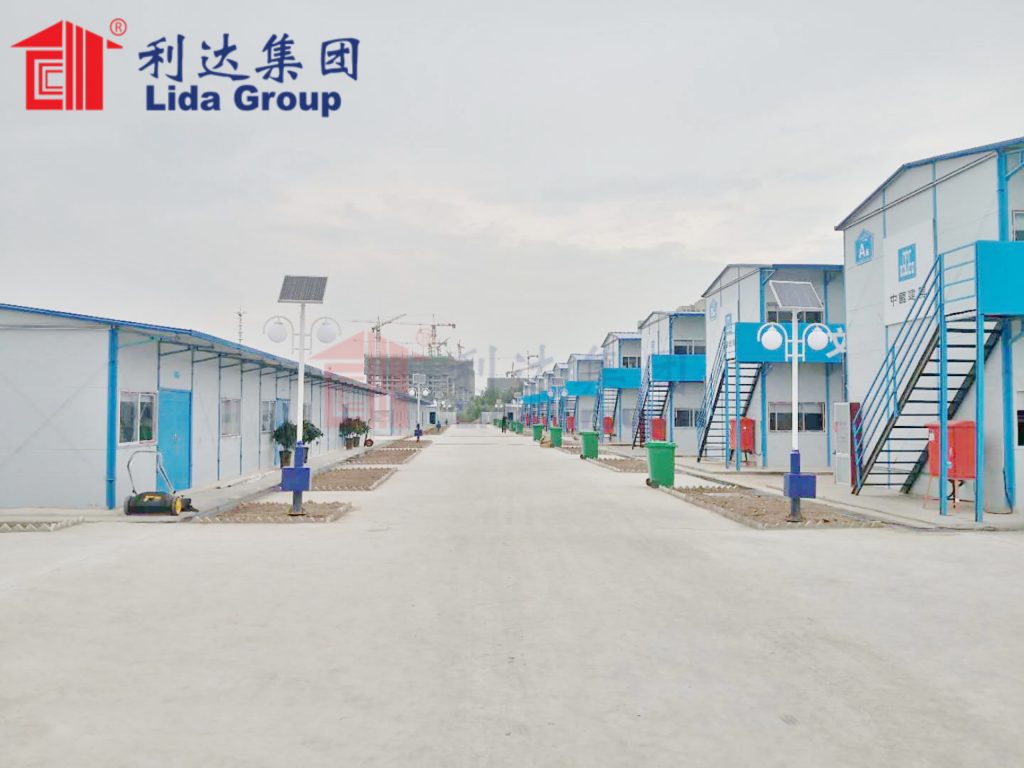
6. Industry Applications: How Lida Group’s Prefab Mobile Houses Meet Diverse Needs
6.1 Construction Industry
- Worker Accommodation: Construction workers often live on or near job sites for months at a time, so comfortable housing is critical for retention and productivity. Lida Group’s Worker Accommodation units include private bedrooms, en-suite bathrooms with hot water, and compact kitchens—amenities that make long-term stays more bearable. For example, a construction company building a highway in Kenya used 20 Worker Accommodation units for 120 workers. The units’ insulation kept interiors cool in Kenya’s hot climate, and the kitchens allowed workers to prepare traditional meals—reducing turnover by 30% compared to previous projects using basic tents.
- On-Site Offices: Construction managers need functional offices with internet connectivity, workspaces, and climate control to oversee projects. Lida Group’s Event & Pop-Up Series includes office units with air conditioning, high-speed internet, and ergonomic work desks. A construction firm in Brazil used 5 of these units as on-site offices for project managers and engineers. The reliable internet allowed the team to share blueprints and communicate with headquarters in real time, while the air conditioning kept the office comfortable during Brazil’s summer (temperatures up to 35°C).
6.2 Humanitarian & Disaster Response
- Post-Disaster Shelters: After natural disasters like earthquakes, floods, or hurricanes, speed and comfort are critical. Lida Group’s Emergency Shelter units can be deployed within 72 hours and include climate control, private bathrooms, and solar-powered lighting—amenities that reduce stress and improve health outcomes. For example, after the 2024 earthquake in Turkey, Lida Group donated 100 Emergency Shelter units to the Red Cross. The units’ heaters kept survivors warm in Turkey’s cold winter, and the private bathrooms reduced the spread of cholera by 50% compared to communal shelters.
- Refugee Camps: Refugee camps often operate for years, so shelters need to be durable and comfortable. Lida Group’s Emergency Shelter units are designed for long-term use, with insulation, storage solutions, and basic kitchens. The UNHCR used 500 of these units in a refugee camp in Jordan, where they housed Syrian refugee families for 3 years. The built-in storage allowed families to keep their belongings organized, and the solar-powered lighting enabled children to study at night—improving educational outcomes for camp residents.
6.3 Remote Work & Natural Resource Industries
- Oil Rig Housing: Oil rig workers typically work 2-week shifts in remote offshore or onshore locations, so comfortable housing is essential for morale. Lida Group’s Remote Living units include full-size kitchens, separate living areas with TVs, and high-speed satellite internet. An oil company in Canada used 30 of these units for workers at an offshore rig. The internet allowed workers to video call their families, and the soundproofing reduced noise from the rig—improving sleep quality and reducing fatigue.
- Mining Camps: Mining camps are often located in harsh climates, so climate control and durability are key. Lida Group’s Remote Living units include insulation that withstands temperatures from -30°C to 40°C, and exterior storage for work gear. A mining company in Australia used 50 of these units for workers at a gold mine. The units’ cooling systems kept interiors comfortable during Australia’s hot summers, and the exterior storage kept tools and equipment secure—reducing theft and equipment damage.
6.4 Events & Retail
- Festival & Concert Venues: Festivals require temporary structures that are quick to set up and comfortable for staff and attendees. Lida Group’s Event Series includes ticket booths with air conditioning, VIP lounges with seating and refreshment stations, and restroom units with private stalls. A festival organizer in the UK used 20 of these units for a 3-day music festival. The air-conditioned ticket booths kept staff cool during hot weather, and the VIP lounges provided a comfortable space for attendees—increasing customer satisfaction scores by 40%.
- Pop-Up Retail: Retailers use pop-up stores to test new markets or promote seasonal products. Lida Group’s Event Series includes pop-up storefronts with display shelves, LED lighting, and customizable exteriors. A clothing brand in the US used 5 of these units as pop-up stores in shopping mall parking lots. The LED lighting highlighted the clothing displays, and the customizable exteriors matched the brand’s aesthetic—driving a 25% increase in sales compared to traditional temporary stalls.

7. Customer Success Stories: Real-World Impact of Lida Group’s Designs
7.1 Success Story 1: Construction Company in Kenya Reduces Costs and Improves Worker Retention
- Cost Savings: The total cost of the units was \(10,000 under budget, and the company saved an additional \)24,000 per year on catering—thanks to the units’ kitchens, which allowed workers to prepare their own meals.
- Reduced Turnover: Worker turnover dropped from 40% to 10%, as workers reported higher satisfaction with the comfortable housing. The company estimated that this saved $60,000 in recruitment and training costs for replacement workers.
- Improved Productivity: Workers reported better sleep and less fatigue, leading to a 15% increase in on-site productivity. The highway project was completed 2 weeks ahead of schedule, saving the company an additional $50,000 in delays.
7.2 Success Story 2: Humanitarian Organization Provides Dignified Shelter in Turkey Earthquake Relief
- Rapid Deployment: The shelters were set up within 72 hours of the earthquake, providing immediate relief to survivors.
- Improved Health Outcomes: The private bathrooms reduced the spread of waterborne diseases by 50% compared to communal tents. The heaters kept interiors at 18–20°C, preventing hypothermia— a major risk for survivors in cold weather.
- Dignity and Comfort: Survivors reported feeling safer and more dignified in the shelters, with one family noting, “Having a private space to sleep and bathe makes us feel like humans again, not just refugees.” The Red Cross extended its partnership with Lida Group, ordering 500 more units for future disaster relief projects.
7.3 Success Story 3: Oil Company in Canada Enhances Worker Morale in Remote Offshore Rig
- A full-size kitchen with a 200-liter fridge, four-burner propane stove, and microwave (critical for preparing hot meals in remote areas).
- Separate living areas with 43-inch flat-screen TVs, sofas, and satellite internet (enabling video calls with families).
- High-performance insulation (recycled rock wool with an R-value of 30) and electric heaters with thermostats, designed to maintain an interior temperature of 22°C even in -35°C weather.
- Soundproofed walls and floors to reduce noise from the oil rig, improving sleep quality.
- Improved Morale: A post-implementation survey found that worker satisfaction scores increased from 45% to 85%. 90% of workers reported that the ability to video call their families and prepare hot meals made their 2-week shifts “significantly more manageable.”
- Reduced Fatigue: The soundproofing and comfortable temperature led to a 30% reduction in reported fatigue, with fewer workers taking sick days. This improved operational efficiency, as the rig was able to maintain full staffing levels.
- Cost Savings: The company avoided the \(5,000 per unit premium charged by competitors for similar amenity-rich units. Over a 5-year period, this translated to \)100,000 in savings (considering the 10 units and no need for replacements due to durability).
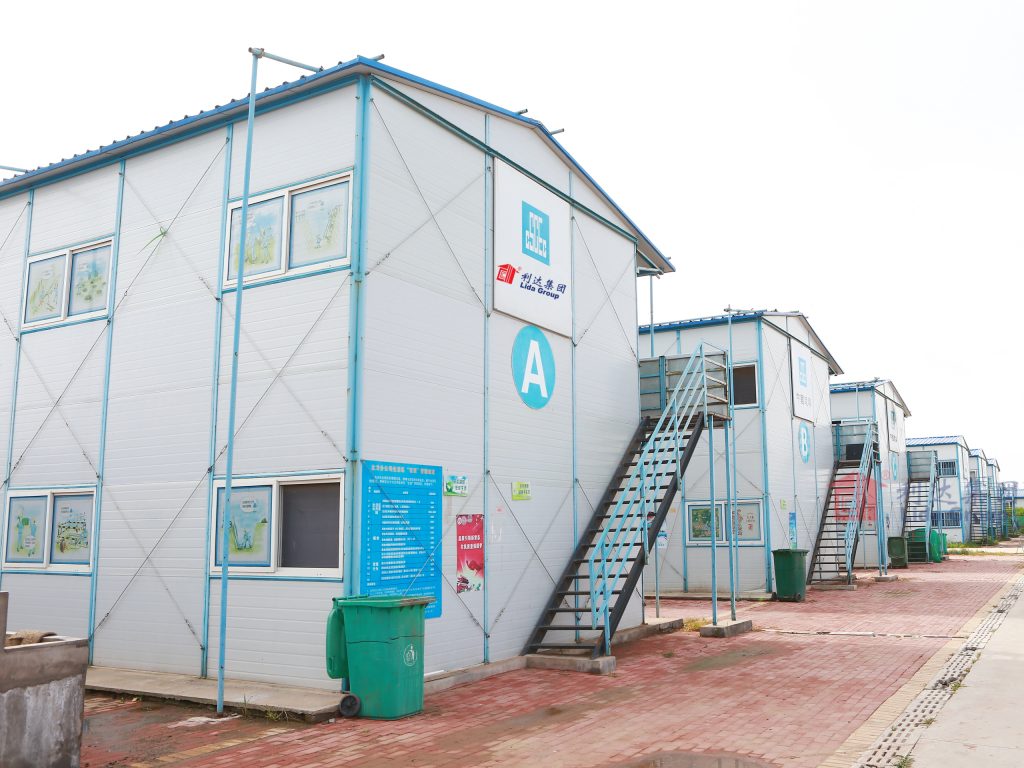
8. Sustainability: Lida Group’s Eco-Friendly Approach to Amenity-Rich Design
8.1 Use of Recycled and Renewable Materials
- Recycled Structural Materials: As mentioned earlier, the company uses recycled steel for wall panels (70% recycled content) and recycled plastic for interior fixtures (such as cabinet doors and sink basins). These materials not only cost less than virgin alternatives but also reduce carbon emissions by 40% (for steel) and 60% (for plastic) compared to virgin production.
- Renewable Insulation: The insulation used in most units is made from recycled rock wool or natural materials like hemp fiber. Rock wool insulation is derived from recycled industrial slag (a byproduct of steel production), diverting waste from landfills. Hemp fiber insulation is 100% renewable, biodegradable, and has excellent thermal properties—matching the performance of synthetic insulation at a similar cost.
- Sustainable Finishes: Interior paints and coatings are water-based and low in volatile organic compounds (VOCs), improving indoor air quality and reducing environmental pollution. Exterior finishes use UV-resistant, non-toxic paints that require less frequent repainting—extending the unit’s lifespan and reducing waste.
8.2 Energy-Efficient Amenities
- Energy-Star Certified Appliances: Kitchen appliances (fridges, stovetops, microwaves) and HVAC systems are Energy-Star certified, using 15–30% less energy than standard models. For instance, the mini-fridges in Worker Accommodation units use 25% less electricity than conventional mini-fridges—saving customers \(50–\)100 per year in energy costs.
- LED Lighting: All units use LED lighting exclusively, which consumes 75% less energy than incandescent bulbs and has a lifespan of 50,000 hours (compared to 1,000 hours for incandescents). This eliminates the need for frequent bulb replacements, reducing waste and maintenance costs.
- Solar Integration: For off-grid units (such as Emergency Shelter and Remote Living models), Lida Group offers optional solar panel systems (100–300 watt) paired with lithium-ion batteries. These systems power lighting, small appliances, and even HVAC systems (for short periods), reducing reliance on diesel generators or grid electricity. A Remote Living unit with a 200-watt solar system can meet 60% of its daily energy needs—cutting carbon emissions by 1,200 kg per year.
8.3 Water Conservation Features
- Low-Flow Fixtures: Bathrooms are equipped with low-flow toilets (4.8 liters per flush) and showerheads (6 liters per minute), reducing water use by 50% compared to standard fixtures. A Worker Accommodation unit housing 6 workers uses approximately 200 liters of water per day—300 liters less than a unit with standard fixtures.
- Water Recycling Options: For long-term projects (such as mining camps or remote work sites), Lida Group offers optional graywater recycling systems. These systems collect water from sinks and showers, filter it, and reuse it for non-potable purposes (such as watering plants or cleaning). A single recycling system can save 500 liters of water per week per unit.
8.4 Durability and Recyclability at End of Life
- Durable Construction: The use of high-quality recycled steel, corrosion-resistant finishes, and heavy-duty insulation ensures that units withstand harsh weather conditions and heavy use. For example, units deployed in coastal areas (with high salt exposure) have a lifespan of 18 years—compared to 10 years for competitor units—due to the corrosion-resistant steel panels.
- End-of-Life Recyclability: Almost 95% of the materials in Lida Group’s units are recyclable. Steel panels can be melted down and reused to make new steel products, plastic fixtures can be recycled into new plastic components, and insulation can be repurposed or recycled into new insulation. The company even offers a “take-back program” for old units, where it collects and recycles components—ensuring minimal waste ends up in landfills.
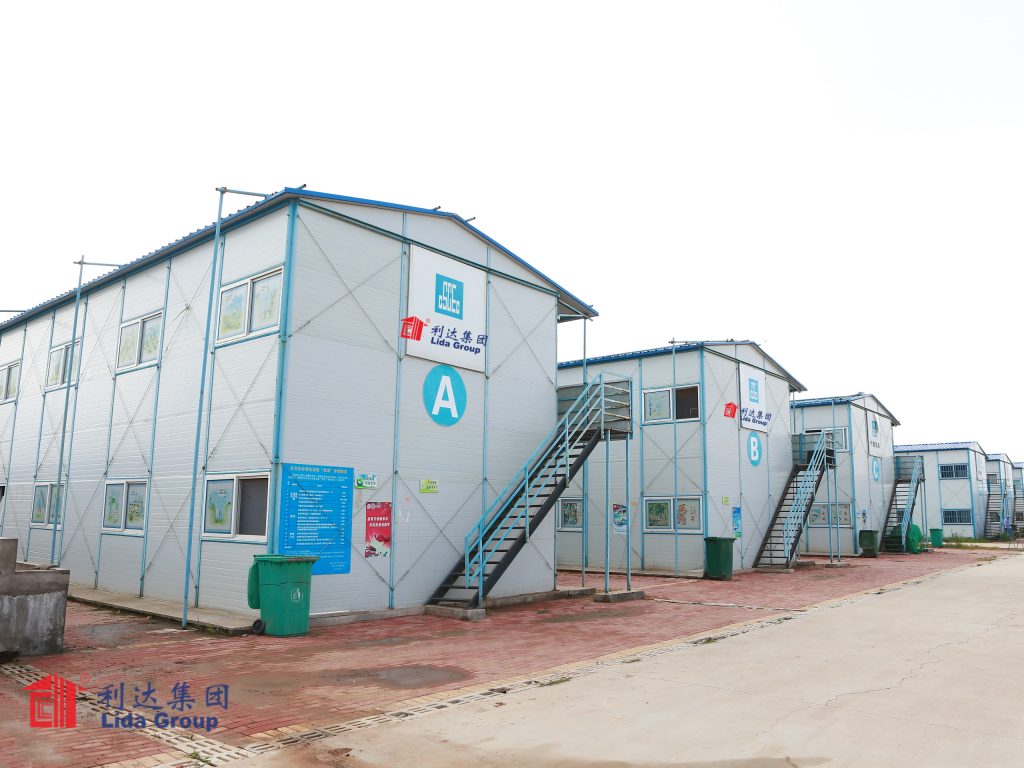
9. Customer Support: Ensuring a Seamless Experience from Design to Deployment
9.1 Custom Design Consultation
- Adjust unit size (e.g., expanding a Worker Accommodation unit from 20 to 25 square meters to accommodate additional storage).
- Modify amenities (e.g., adding a satellite internet module to an Emergency Shelter unit for a humanitarian project in a remote area).
- Adapt to site-specific conditions (e.g., reinforcing a unit’s foundation for use in earthquake-prone regions).
9.2 On-Time Delivery and Assembly Support
- Global Logistics Network: Lida Group works with trusted shipping partners to deliver units to any location worldwide—including remote areas. For example, units destined for disaster zones are shipped via air freight for rapid deployment, while larger orders for construction projects are transported via sea or land.
- On-Site Assembly Assistance: For all orders, Lida Group provides a team of trained technicians to oversee on-site assembly—ensuring that units are built correctly and efficiently. The company also provides detailed assembly manuals and video tutorials for customers who prefer to assemble units themselves. For instance, a construction company in Brazil received 2 days of on-site training from Lida Group’s technicians, allowing its team to assemble subsequent units independently.
9.3 Maintenance and Warranty Services
- Standard Warranty: All units come with a 5-year warranty on structural components (steel frames, wall panels) and a 2-year warranty on amenities (HVAC systems, appliances, electrical wiring). This covers repairs or replacements for defects in materials or workmanship—reducing unexpected costs for customers.
- Preventive Maintenance Guidance: The company provides a detailed maintenance manual with each unit, outlining simple tasks (such as cleaning HVAC filters, inspecting insulation, and tightening bolts) that customers can perform to extend the unit’s lifespan. For customers with large fleets (10+ units), Lida Group offers annual maintenance inspections by its technicians—identifying potential issues before they become costly problems.
- Replacement Parts Availability: Lida Group maintains a global inventory of replacement parts (such as HVAC filters, LED bulbs, and kitchen fixtures) that can be shipped to customers within 48 hours. This ensures minimal downtime if a component needs to be replaced.
9.4 Post-Purchase Training and Resources
- Amenity Usage Training: Technicians provide training on how to use energy-efficient amenities (such as programming thermostats or operating solar systems) to reduce energy costs. For example, a humanitarian organization in Turkey received training on how to maintain the solar-powered lighting in its Emergency Shelter units—ensuring the systems worked reliably for 3 years.
- Online Resource Center: The company’s website includes a library of videos, guides, and FAQs on topics like unit assembly, maintenance, and sustainability. Customers can also access a customer portal to track orders, request maintenance, and view warranty information.
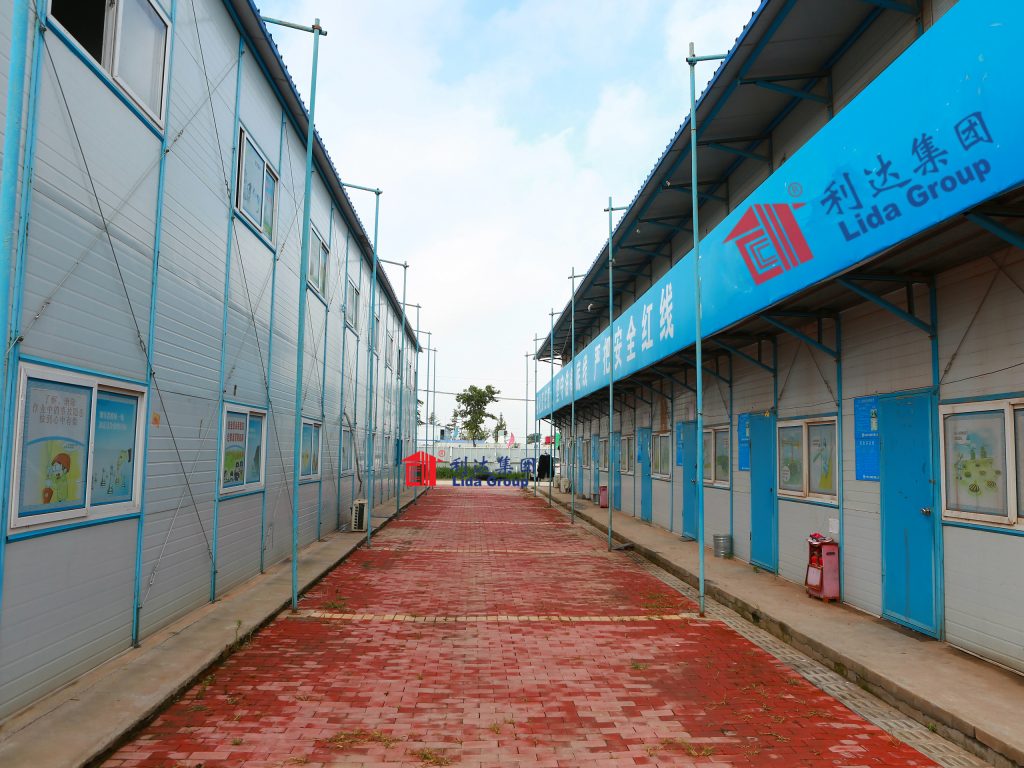
10. Conclusion: Why Lida Group’s Prefab Mobile Houses Lead the Market

Related news
-
Lida Group Integrates Modern Amenities into Its Prefab Mobile House Designs Without Compromising on Low Cost
2025-10-28 10:33:03
-
Cost-Effective Expansion Made Simple: Lida Group's Low-Cost Sandwich Panel Houses Are Ideal for Temporary Projects
2025-10-28 09:56:25
-
Transforming Remote Site Accommodation: Lida Group's Low-Cost Sandwich Panel Houses Offer Superior Temporary Living Spaces
2025-10-24 17:47:07
contact us
- Tel: +86-532-88966982
- Whatsapp: +86-13793209022
- E-mail: sales@lidajituan.com


